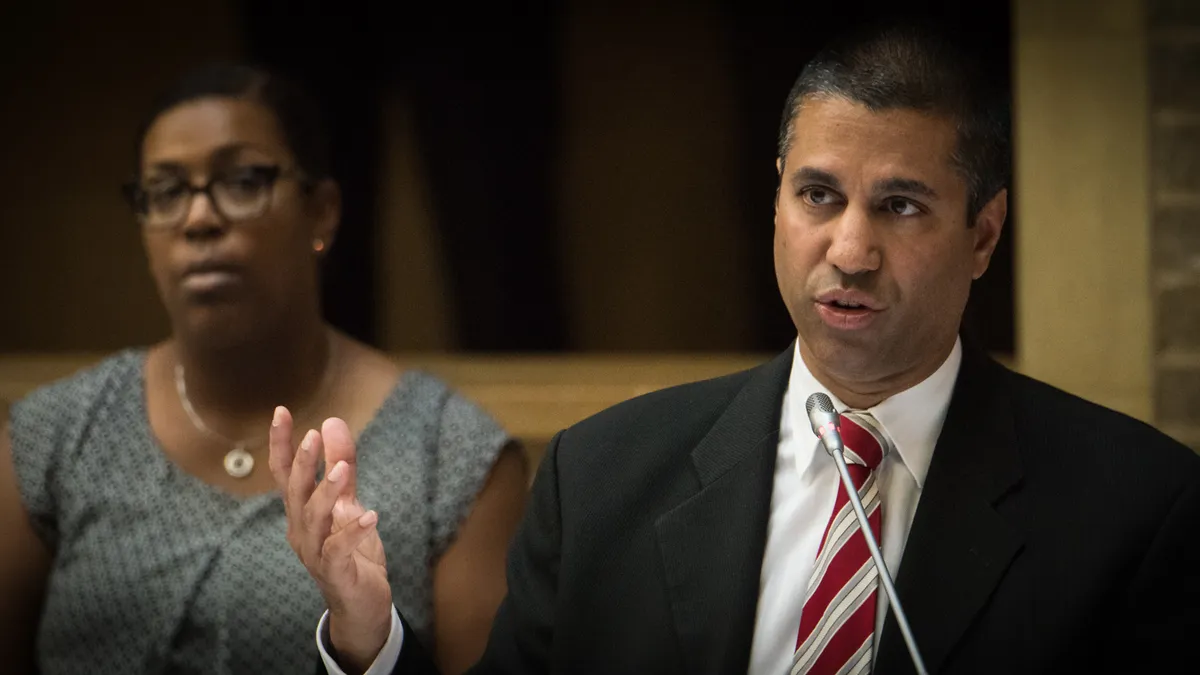Dive Brief:
- Federal Communications Commission (FCC) Chairman Ajit Pai announced plans for a $9 billion fund to help carriers deploy 5G wireless service in rural America, which will replace an existing program that supported 4G LTE networks.
- The 5G Fund will be distributed through a reverse auction and will target areas with difficult terrain or sparse populations. The FCC will set aside at least $1 billion for projects facilitating precision agriculture.
- According to a report released by the FCC this week, the previous Mobility Fund Phase II was marred by inaccurate data provided by carriers. Based on speed tests conducted over nearly 10,000 miles of driving, FCC staff determined that “coverage maps submitted by certain carriers likely overstated each provider’s actual coverage and did not reflect on-the-ground experience in many instances."
Dive Insight:
Telecoms have charged ahead to deploy 5G in urban areas since the spring, with limited launches in downtown neighborhoods. But rural areas have lagged behind. Because 5G requires installation of small cells to broadcast heavy data, it’s a challenge to install the necessary infrastructure in sparsely populated areas. Despite promises from telecoms that they will target rural areas — Sprint and T-Mobile have made that pledge a key part of their proposed merger — deployment is likely far off.
The federal funding, however, will offer a major inventive and help companies get over the high up-front cost of installing infrastructure and obtaining spectrum. Federal funding from the FCC, the Agriculture Department and other agencies has helped improve rural broadband access.
Christopher Mitchell, director of the Community Broadband Networks Initiative for the Institute for Local Self-Reliance, said the funds will help, although he cautioned that rural areas will still not likely see the kind of speeds cities will get. Instead, he said, “you’ll see better services that may be similar to 5G, but it’s really about improved mobile service.”
That, Mitchell added, will require oversight by the FCC, especially after the problems with the 4G deployment. According to the FCC report, participants in the Mobility Fund Phase II, including Verizon, U.S. Cellular, and T-Mobile, provided data that was "not sufficiently reliable" to justify continuing the program. That meant customers were not getting promised speeds, and the digital divide did not shrink as much as the government had promised it would.
"This is nothing that came out of the blue, the FCC had ample opportunity to look into this and act on it," Mitchell said. "They need to be much more stringent and dedicate a focus to proving that claims that are made are followed through."











